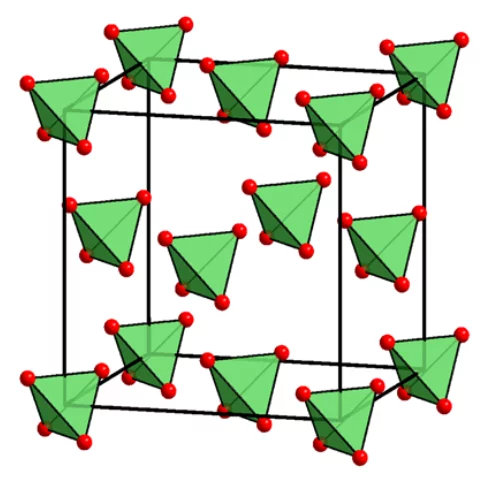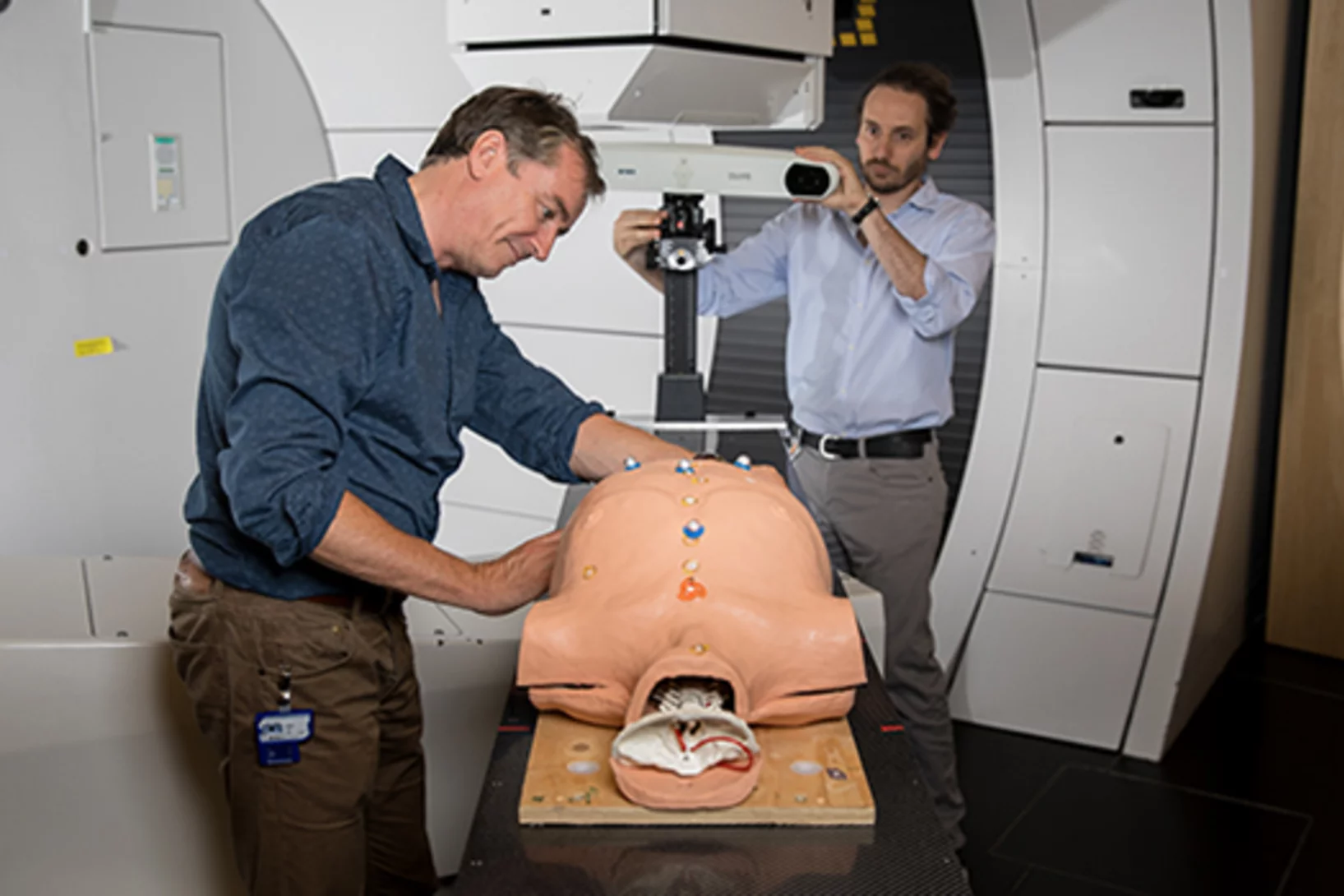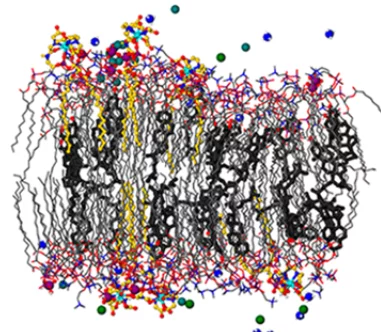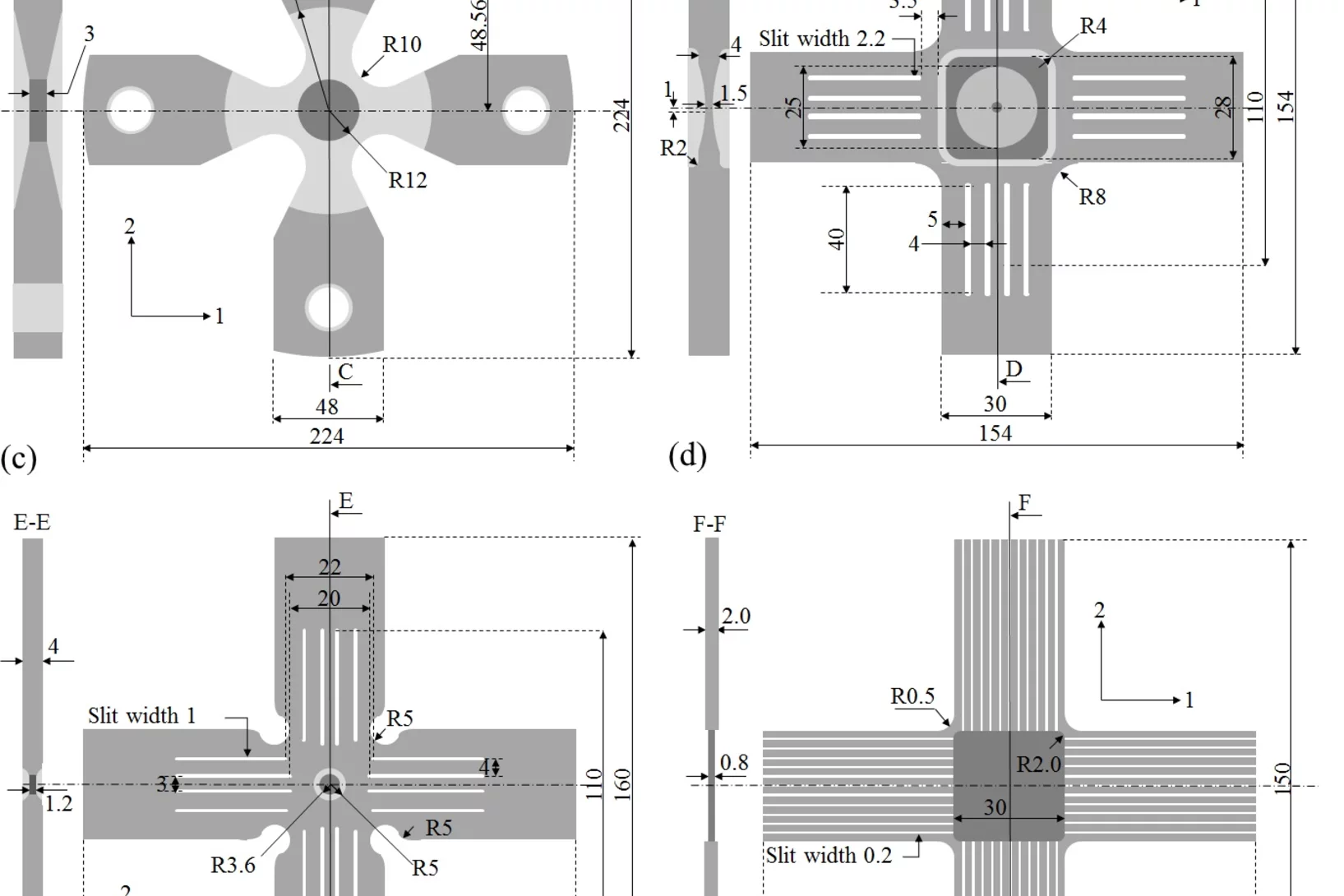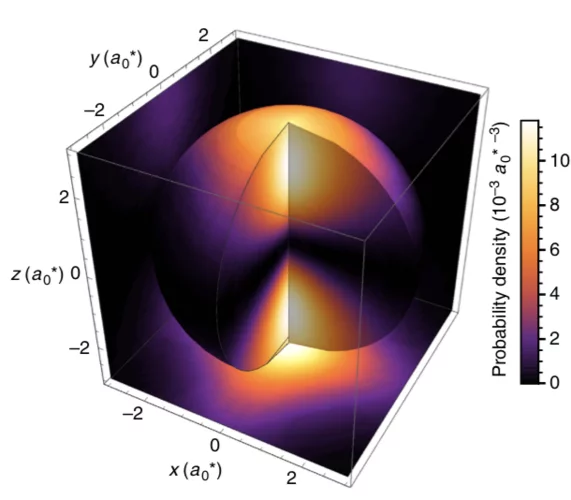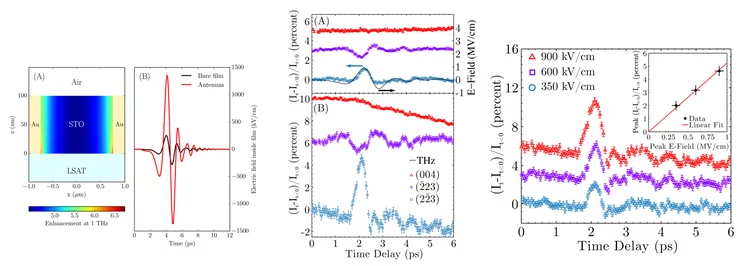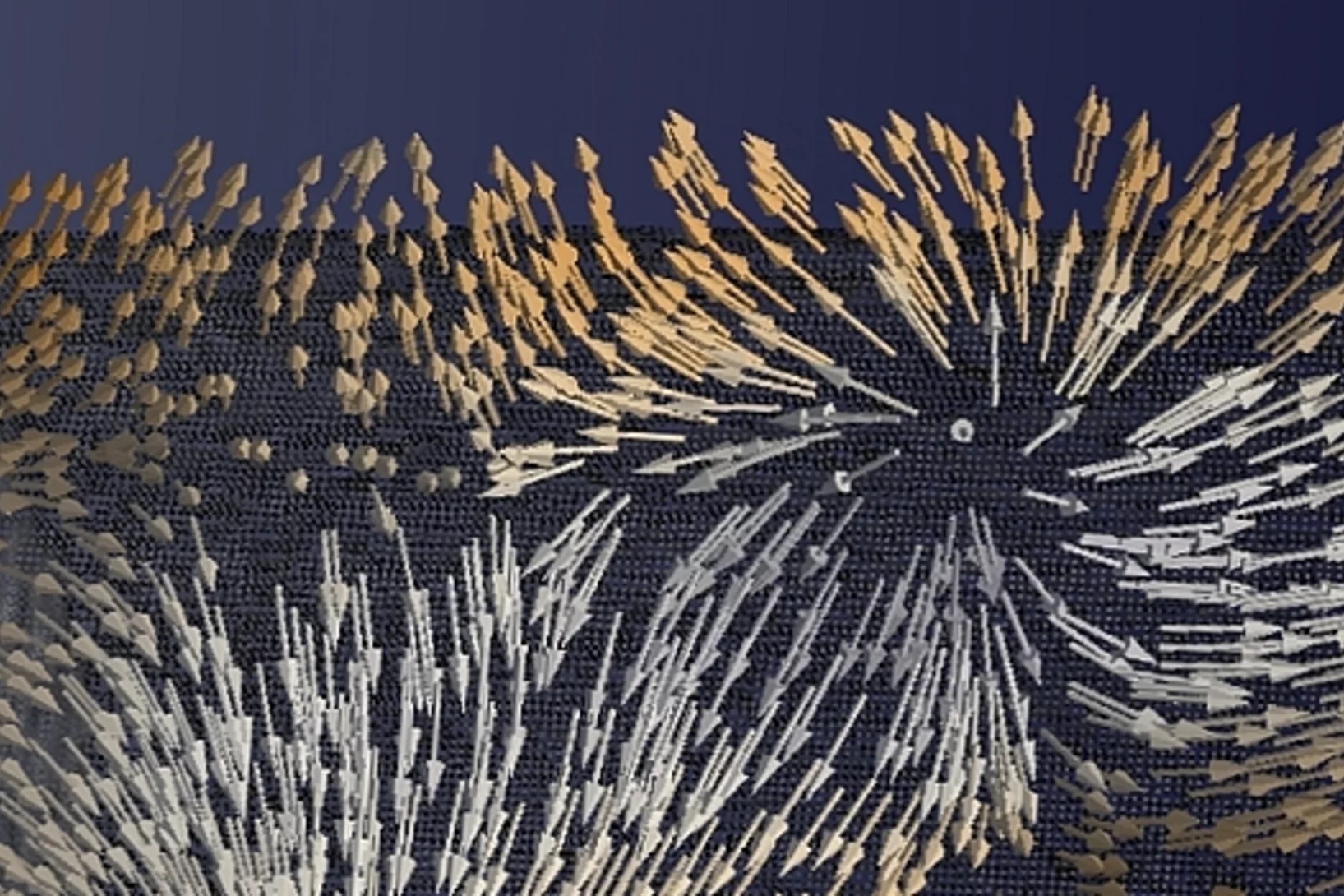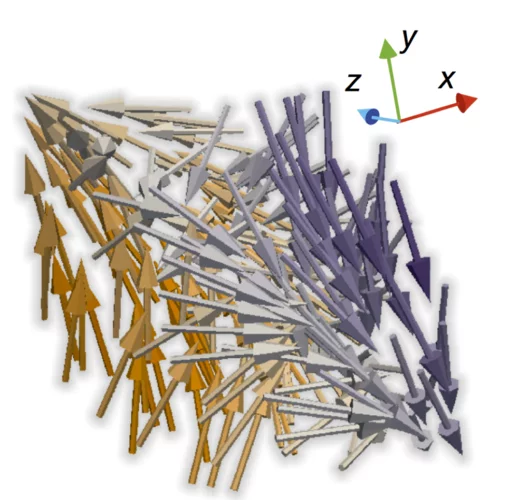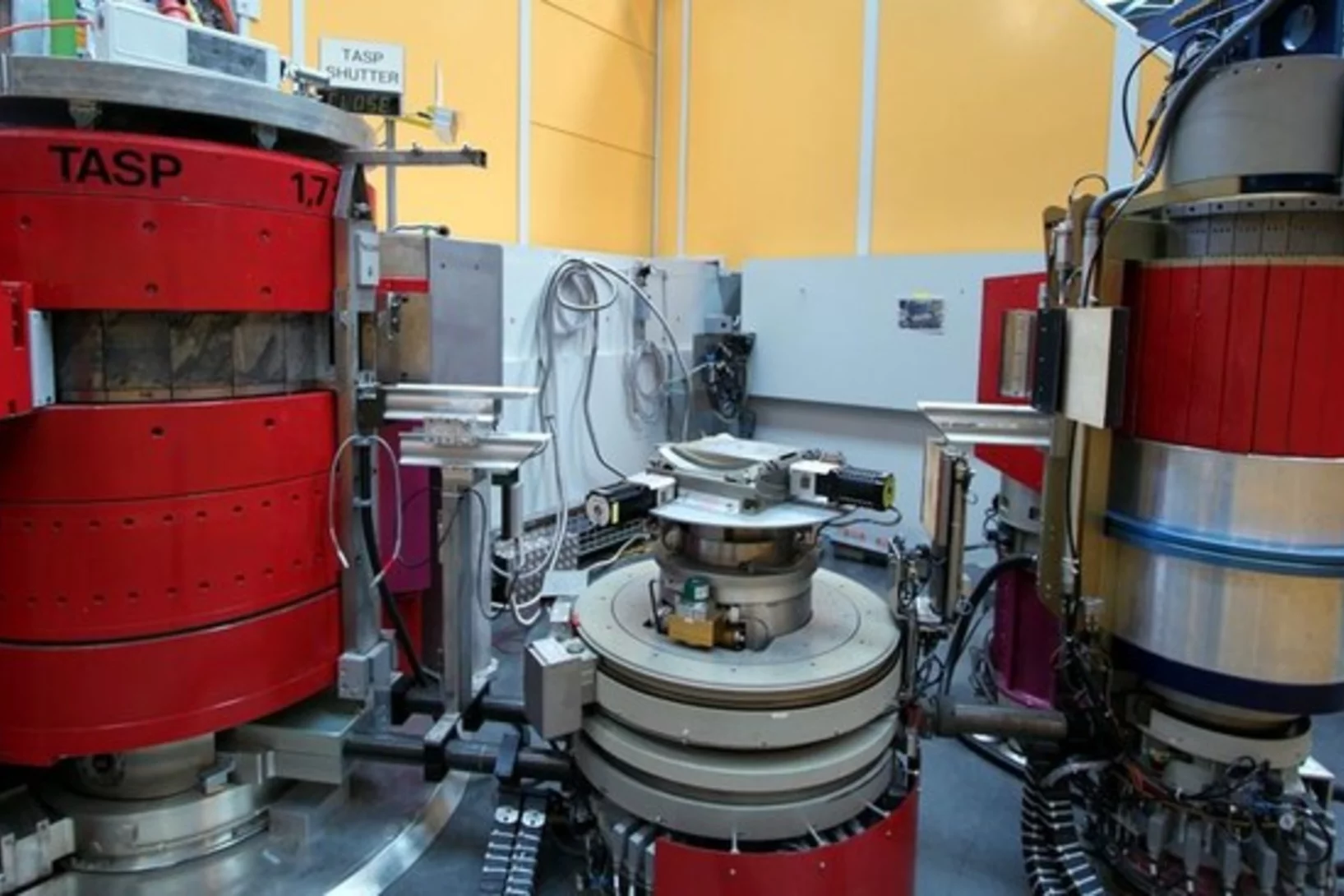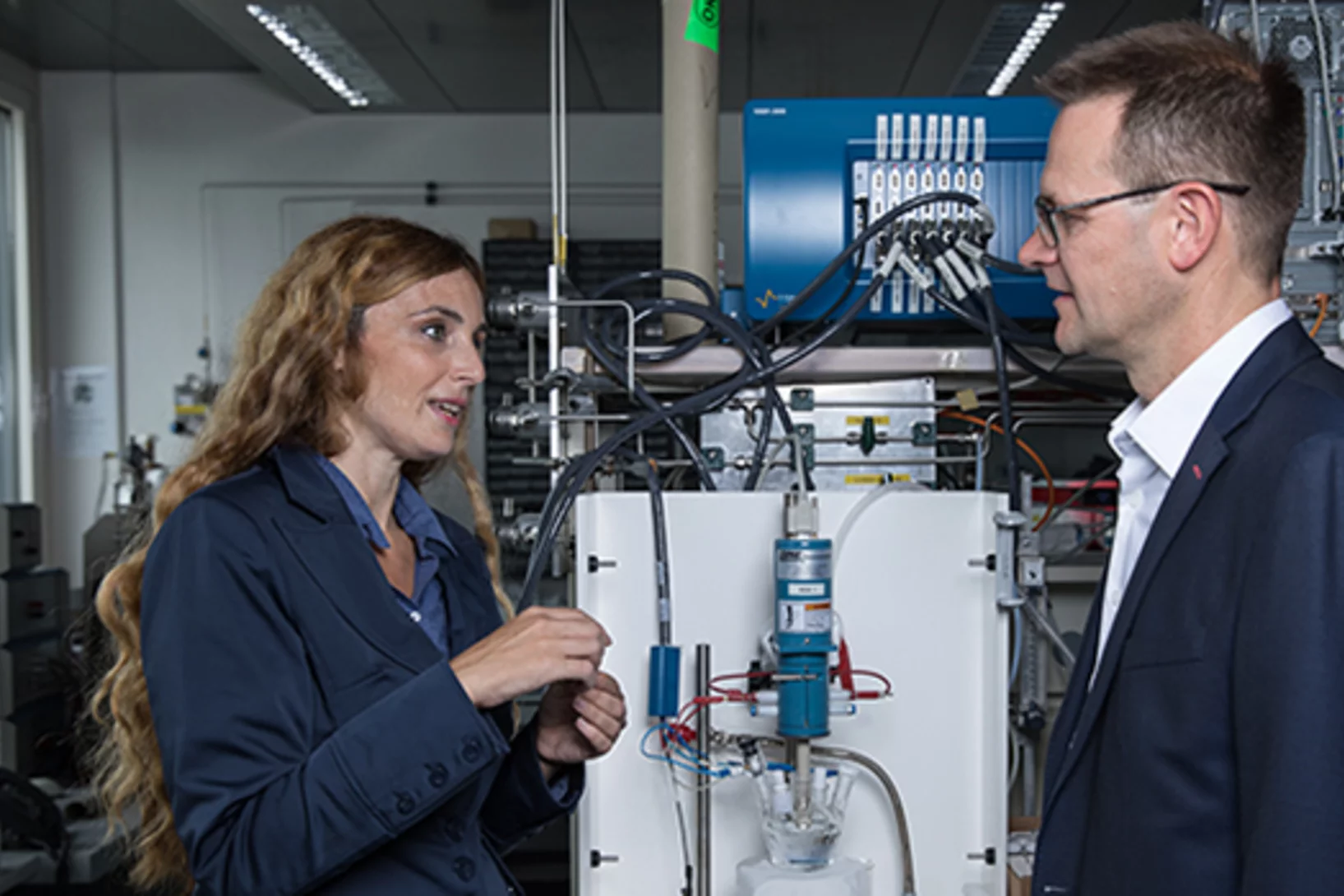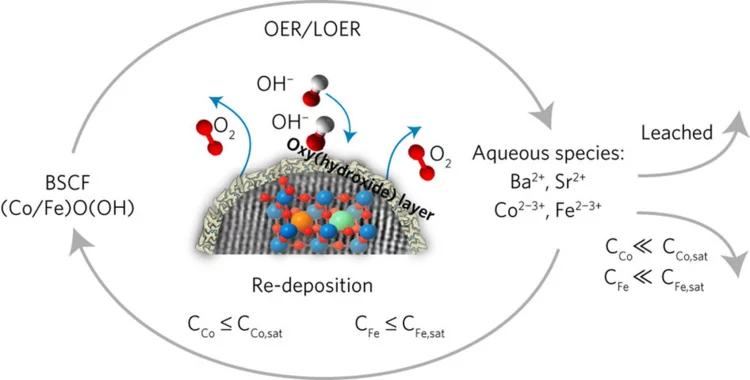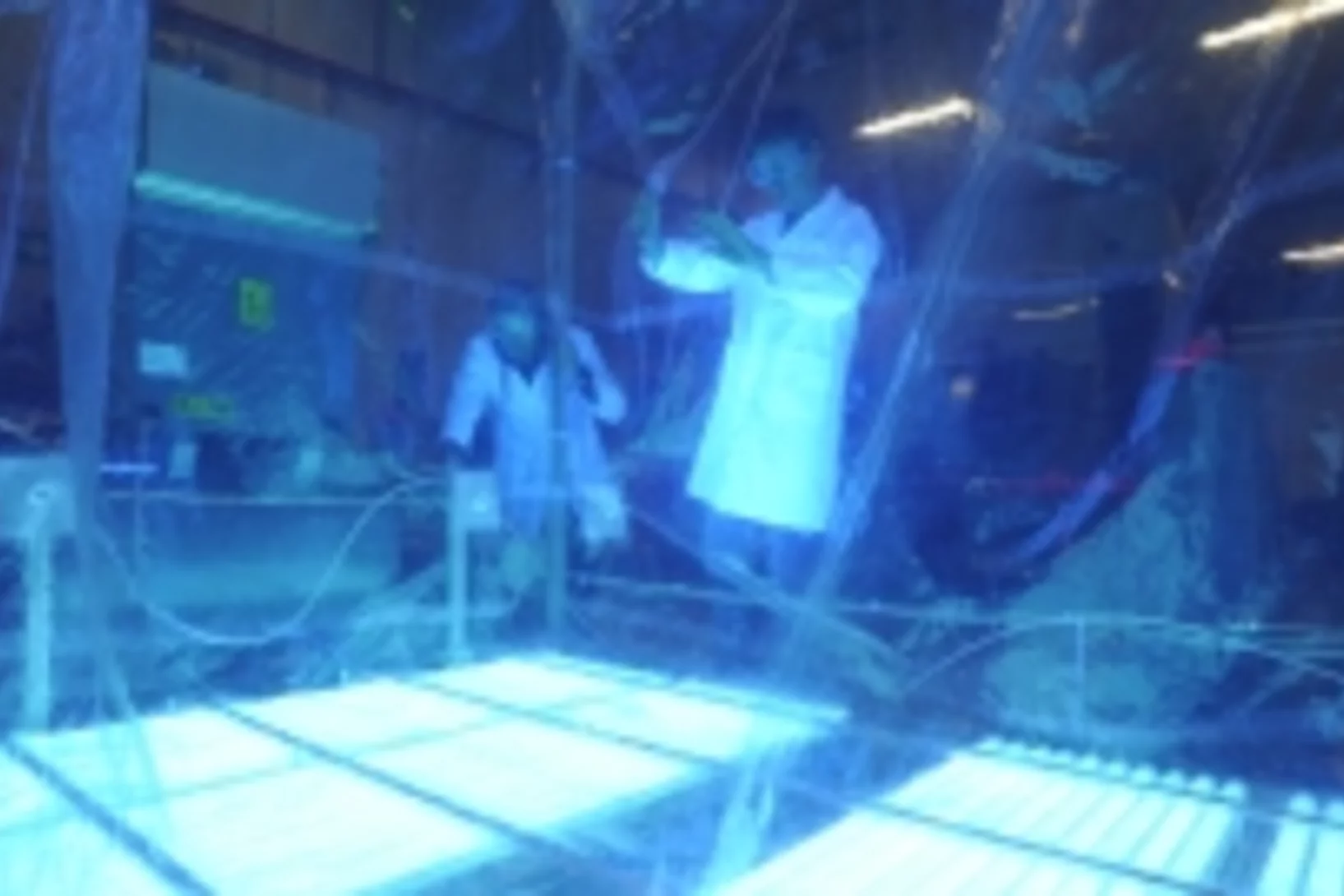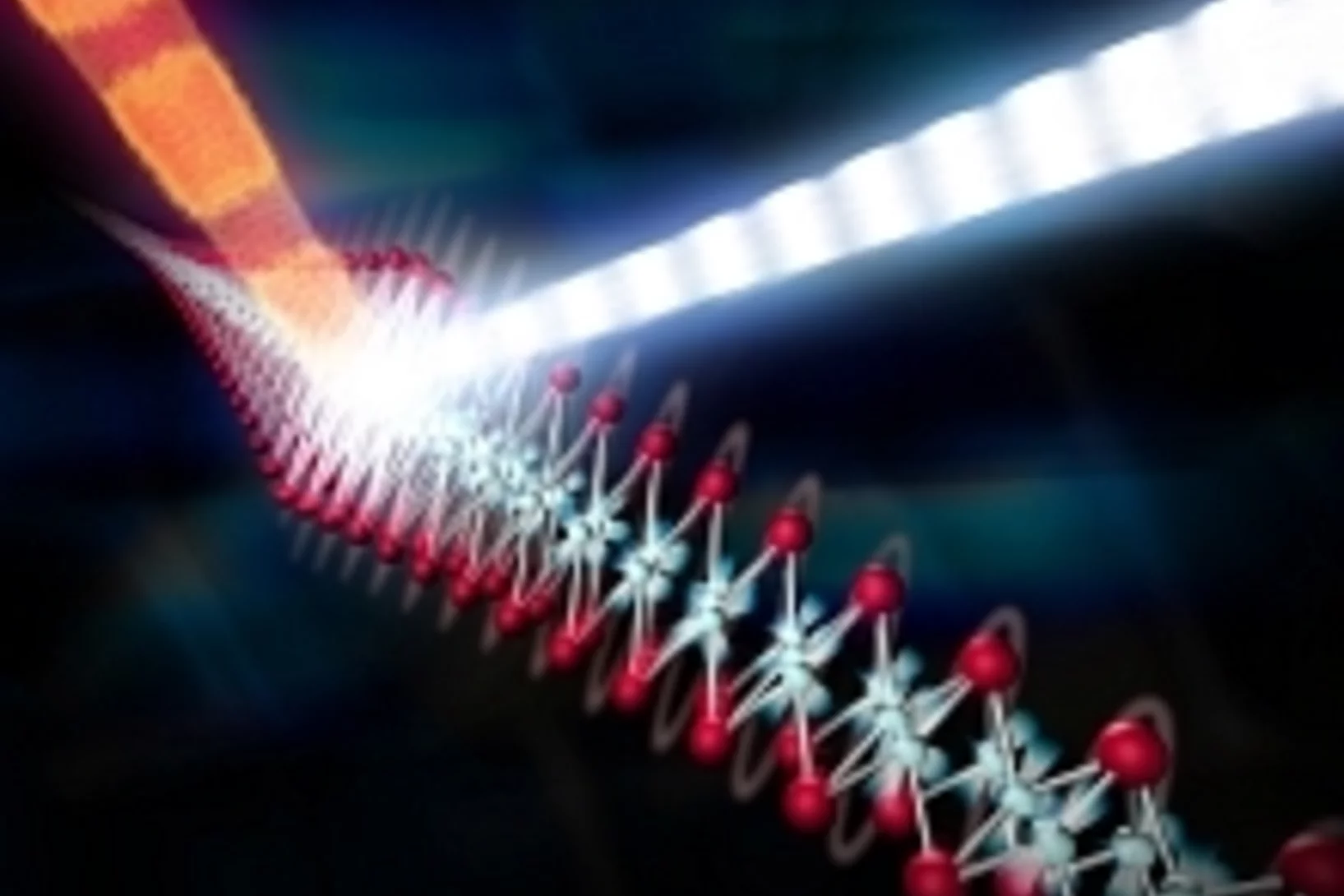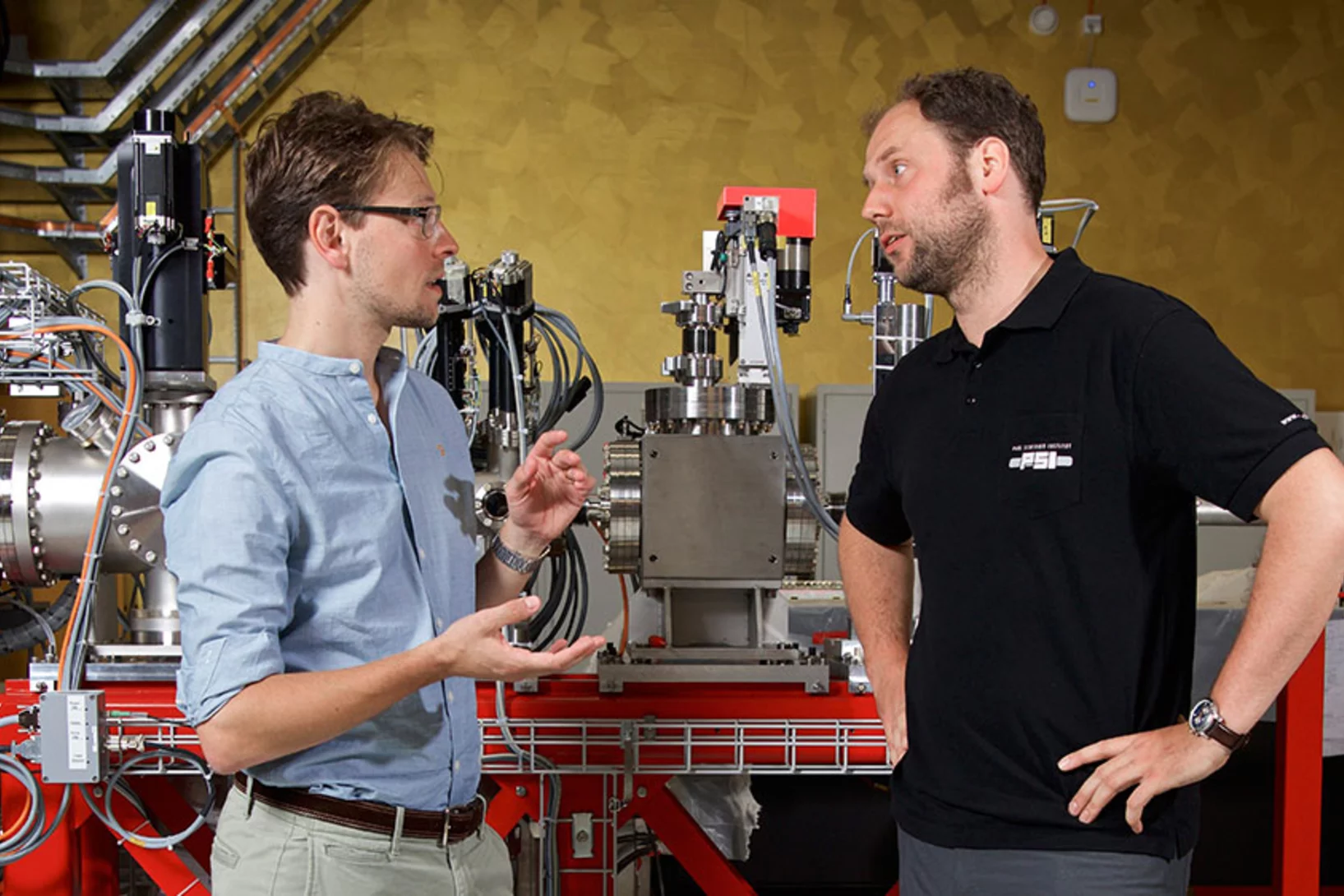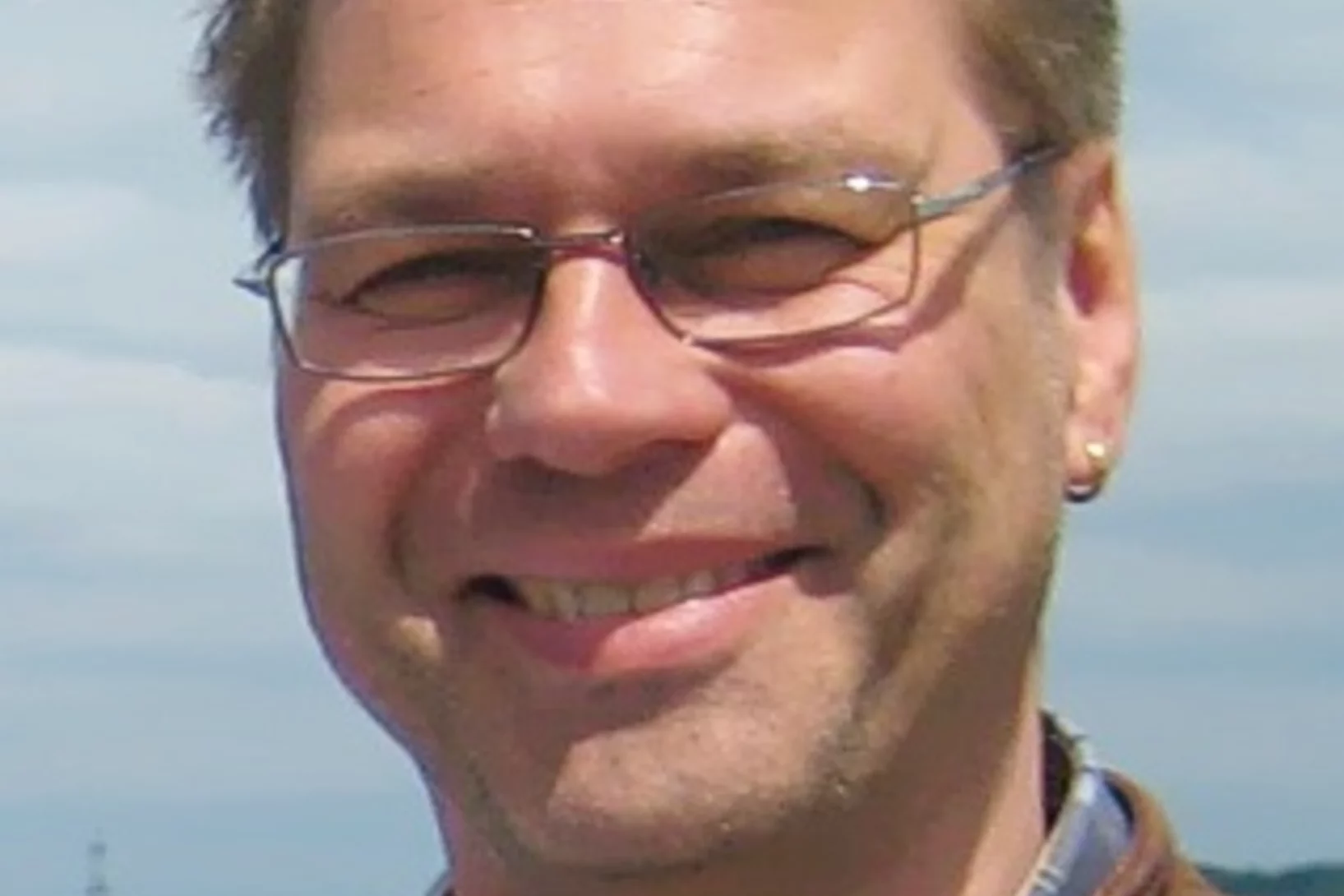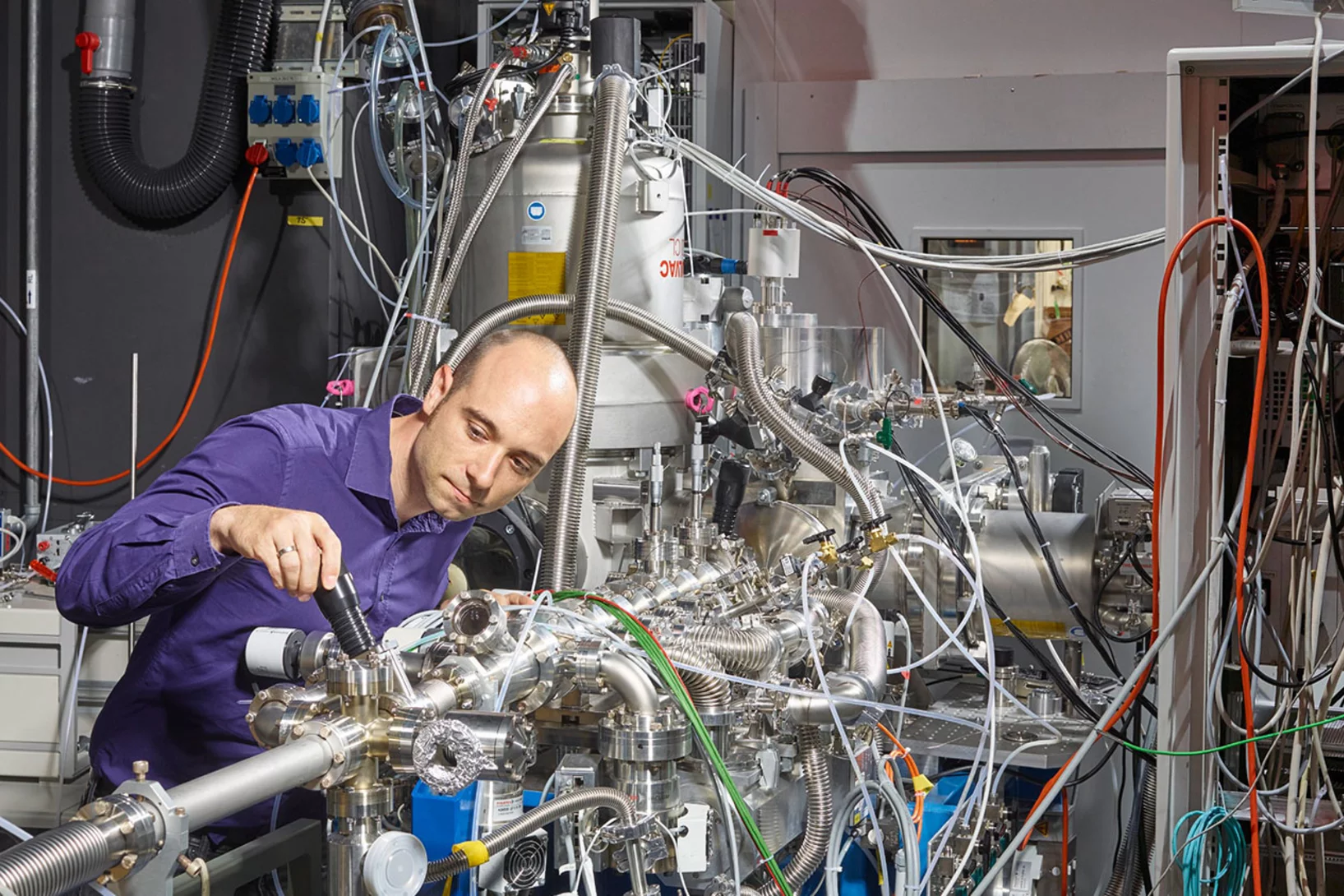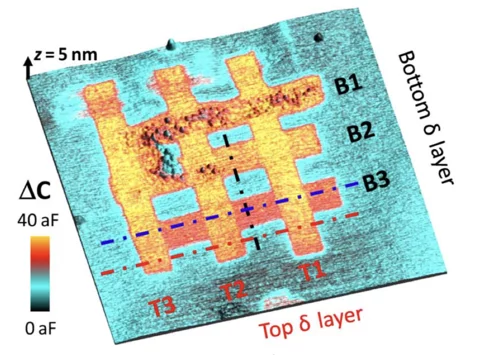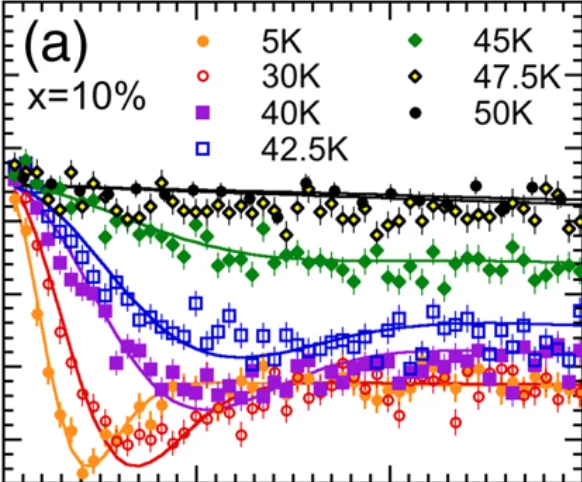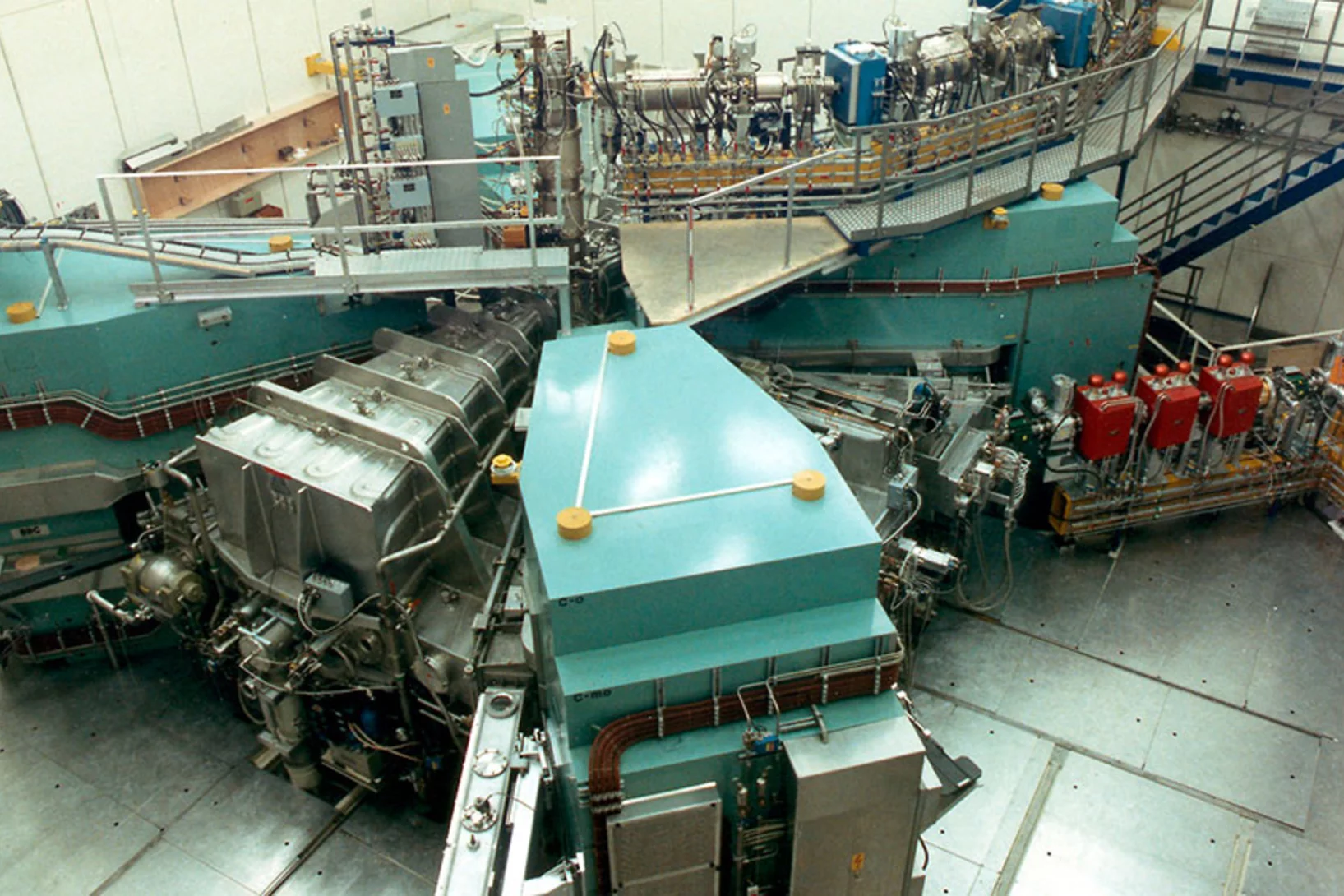Abkehr von der Kernenergie, Ausbau von Solar- und Windkraft, Energiegewinnung aus Biomasse, Senkung des Energieverbrauchs. Bis 2050 soll die Schweiz klimaneutral werden. Ein ehrgeiziges Ziel, welches durch die zunehmend herausfordernde geopolitische Lage dringlicher denn je geworden ist. Wie lässt sich in den nächsten Jahren eine nachhaltige und widerstandsfähige Energieversorgung für die Schweiz aufbauen? Wie können erneuerbare Energien optimal genutzt werden? Welche neuen Technologien sind besonders vielversprechend? Am PSI suchen Forschende nach Antworten auf diese entscheidenden Fragen.
Equilibrium Skyrmion Lattice Ground State in a Polar Easy-plane Magnet
The skyrmion lattice state (SkL), a crystal built of mesoscopic spin vortices, gains its stability via thermal fluctuations in all bulk skyrmion host materials known to date. Therefore, its existence is limited to a narrow temperature region below the paramagnetic state. This stability range can drastically increase in systems with restricted geometries, such as thin films, interfaces and nanowires.
Chemical Imaging to Spy on Malaria Parasites
Unique insights into the adolescence and metabolism of a Malaria parasite in a human red blood cell are obtained by a new chemical imaging methodology – in situ correlative X-ray fluorescence microscopy and soft X-ray tomography.
Grenzen austesten zum Wohle der Patienten
Protonentherapie ist ein Erfolgsprodukt am Paul Scherrer Institut PSI. Trotzdem arbeiten die Forschenden unermüdlich weiter, um die Behandlung noch schneller und noch sicherer zu machen.
Welcome Huanyu Yang
Join me in welcoming Huanyu Yang, our new PhD student in Markus Ammann’s group.
He has a Bachelor degree in Physics and obtained his Master from the University of Rome, “La Sapienza”. The title of his dissertation was “Optical pump-terahertz probe on semiconductors” and the project task was to study the electro-optical properties of several semiconductors by constructing the time-domain and time-resolved spectroscopy with a laser (pulse duration <100 fs), both at equilibrium state and dynamical state.
At PSI, Huanyu Yang will be studying the hydrogen bonding structure at solid and aqueous interfaces with X-Ray photoelectron spectroscopy.
Understanding the Enhanced Magnetic Response of Aminocholesterol Doped Lanthanide-Ion-Chelating Phospholipid Bicelles
Cholesterol (Chol-OH) and its conjugates are powerful molecules for engineering the physicochemical and magnetic properties of phospholipid bilayers in bicelles.
High-Tc superconductivity in undoped ThFeAsN
Unlike the widely studied ReFeAsO series, the newly discovered iron-based superconductor ThFeAsN exhibits a remarkably high critical temperature of 30 K, without chemical doping or external pressure. Here we investigate in detail its magnetic and superconducting properties via muon-spin rotation/relaxation and nuclear magnetic resonance techniques and show that ThFeAsN exhibits strong magnetic fluctuations, suppressed below ≈35 K, but no magnetic order.
Stresses and Strains in cruciform samples deformed in tension
Cruciform experiments are very useful to study non-proportional strain path change behavior of engineering metals and alloys. This work studies the stress response of 6 prominently used cruciform geometries deformed under tension. Results show that for most of the cruciform samples, the gauge stresses are non-linearly coupled to the applied forces in both arms. Cruciform geometries based on the ISO standard are able to decouple these stresses but negligible gauge plastic strains are reached prior to failure.
Coherent superpositions of three states for phosphorous donors in silicon prepared using THz radiation
Superposition of orbital eigenstates is crucial to quantum technology utilizing atoms, such as atomic clocks and quantum computers, and control over the interaction between atoms and their neighbours is an essential ingredient for both gating and readout. A team of researchers including Photon Science division head Gabriel Aeppli has demonstrated THz laser pulse control of Si:P orbitals using multiple orbital state admixtures, observing beat patterns produced by Zeeman splitting. The beats are an observable signature of the ability to control the path of the electron, which implies we can now control the strength and duration of the interaction of the atom with different neighbours. This could simplify surface code networks which require spatially controlled interaction between atoms. The full article can be read in Nature Communications
Moving atoms with enhanced
THz pulses and tracking them with ultrashort x-ray pulses on an XFEL
Controlled motions of atoms using ultrashort electric field pulses allow to manipulated the properties of a material on ultrafast timescales. Here we show how metallic structures can be used to enhance a THz electric field pulse and track the induced atomic motions with ultrashort x-ray pulses emitted by a X-ray free electron laser.
Tauchgang in einen Magneten
Zum ersten Mal haben Forschende die Richtungen der Magnetisierung in einem dreidimensionalen magnetischen Objekt sichtbar gemacht. Die kleinsten Details in ihrer Visualisierung waren dabei zehntausend Mal kleiner als ein Millimeter. In der sichtbar gemachten magnetischen Struktur stach eine Art von Muster besonders hervor: magnetische Singularitäten namens Bloch-Punkte, die bisher nur in der Theorie bekannt waren.
Three-dimensional magnetization structures revealed with X-ray vector nanotomography
In soft ferromagnetic materials, the smoothly varying magnetization leads to the formation of fundamental patterns such as domains, vortices and domain walls. These have been studied extensively in thin films of thicknesses up to around 200 nanometres, in which the magnetization is accessible with current transmission imaging methods that make use of electrons or soft X-rays.
New quantum state observed in a Shastry–Sutherland compound
Scientists from PSI and the École polytechnique fédérale de Lausanne (EPFL) have shown experimentally, for the first time, a quantum phase transition in strontium copper borate, the only material to date that realizes the famous Shastry–Sutherland quantum many-body model.
Nanomaterial hilft Sonnenenergie zu speichern: effizient und kostengünstig
Damit Sonnen- und Windenergie in Form von Wasserstoff gespeichert werden können, werden effiziente Elektrolyseure benötigt. Dank eines neuen Materials, das Forschende des Paul Scherrer Instituts PSI und der Empa entwickelt haben, dürften diese Geräte in Zukunft günstiger und effizienter werden. Die Forschenden haben auch gezeigt, wie sich das neue Material zuverlässig in grossen Mengen herstellen lässt, und seine Leistungsfähigkeit in einer technischen Elektrolysezelle, der Hauptkomponente eines Elektrolyseurs, nachgewiesen.
Nanomaterial helps store solar energy: efficiently and inexpensively
By combining a scalable cutting-edge synthesis method with time-resolved X-ray absorption spectroscopy measurements, it was possible to capture the dynamic local electronic and geometric structure during realistic operando conditions for highly active OER perovskite nanocatalysts.
4-spin plaquette singlet state in the Shastry–Sutherland compound SrCu2(BO3)2
The study of interacting spin systems is of fundamental importance for modern condensed-matter physics. On frustrated lattices, magnetic exchange interactions cannot be simultaneously satisfied, and often give rise to competing exotic ground states. The frustrated two-dimensional Shastry–Sutherland lattice realized by SrCu2(BO3)2 is an important test to our understanding of quantum magnetism.
Three-Dimensional Electronic Structure of the Type-II Weyl Semimetal WTe2
By combining bulk sensitive soft-x-ray angular-resolved photoemission spectroscopy and first- principles calculations we explored the bulk electron states of WTe2, a candidate type-II Weyl semimetal featuring a large nonsaturating magnetoresistance. Despite the layered geometry suggesting a two-dimensional electronic structure, we directly observe a three-dimensional electronic dispersion.
Gasoline cars produce more carbonaceous particulate matter than modern filter-equipped diesel cars
In contrast to nitrogen oxides, modern gasoline cars emit much more cancerogenic primary soot (black carbon + primary organic aerosol) and lead to more toxic secondary organic aerosol than modern diesel vehicles.
Understanding the reaction mechanism in lignin catalytic fast pyrolysis
Lignin is a major constituent of plants, and may be used as a precursor for fuels and fine chemicals. Catalytic fast pyrolysis of lignin is one of the most promising approaches. By using vacuum ultraviolet synchrotron radiation and threshold photoelectron spectroscopy we could identify elusive intermediates, which are responsible for the formation of phenol and benzene and could thus tackle this reaction mechanism. Mechanistic understanding could enable targeted improvement of production methods in the future, beyond the currently used "cook-and-look" approach.
Scientists get first direct look at how electrons ‘dance’ with vibrating atoms
Scientists at the SLAC National Accelerator Laboratory and Stanford University - one of the leading authors, Simon Gerber, has in the meantime relocated to PSI - have made the first direct measurements, and by far the most precise ones, of how electrons move in sync with atomic vibrations rippling through an quantum material, in the present study an unconventional superconductor, as if they were “dancing" to the same beat.
Forschungserfahrung aus Kalifornien kommt Schweizer Röntgenlaser SwissFEL zugute
Ein Freie-Elektronen-Röntgenlaser (FEL) kann extrem schnelle Prozesse sichtbar machen. Ende 2017 werden die ersten Pilotexperimente am Schweizer Freie-Elektronen-Röntgenlaser SwissFEL am Paul Scherrer Institut PSI stattfinden. Zwei aktuelle Publikationen in Science und Nature Communications zeigen, welch herausragende Wissenschaft an einer solchen Anlage möglich ist. Die Arbeiten wurden am Röntgenlaser LCLS in Kalifornien durchgeführt. Mittlerweile sind zwei der führenden Autoren als Wissenschaftler ans PSI übergesiedelt, um ihre Erfahrung beim Ausbau des SwissFEL einzubringen.
Scientists get first direct look at how electrons ‘dance’ with vibrating atoms
Research experience from California's X-ray free-electron laser benefits SwissFEL. It's the camera that allows researchers to make extremely rapid processes visible: the X-ray free-electron laser. Currently, however, only three sites worldwide—in the US, Japan and South Korea—have facilities capable of carrying out such measurements. Two current articles in Science and Nature Communications co-authored by researchers now at the Paul Scherrer Institute PSI exemplify the kind of outstanding scientific work that can be carried out at such facilities, enabling new insights into the mechanisms of superconductors and magnetic switching in molecules. The measurements were conducted at the Linac Coherent Light Source (LCLS) free-electron laser in California. Press release PSI / Press release SLAC
LUC climbs Furka and Grimsel
This year's excursion exposed us to high-alpine wild flowers. A guided tour on alpine plant ecology at the Alpine Research Station Furka had to be canceled in last minute, and was replaced by hiking the Grimsel area, equipped with plant ecology apps.
Rhea Stewart from the University of St Andrews wins an ISMS Young Scientist Award
Rhea Stewart from the University of St Andrews, UK, has been honoured with an ISMS Young Scientist Award
at the 14th International Conference on Muon Spin Rotation Relaxation and Resonance (μSR2017) in Sapporo, Japan,
for her exceptional oral presentation entitled “Anomalous Meissner Screening Probed using Low Energy Muon Spin Spectroscopy”. The Low Energy µSR
experiments have been performed at the LEM facility of the Swiss Muon Source SµS.
Thomas Prokscha new President of ISMS
Thomas Prokscha from the Laboratory for Muon Spin Spectroscopy LMU and Head of the LEM Group has been announced as the new President of the International Society for μSR Spectroscopy (ISMS)
at the 14th International Conference on Muon Spin Rotation Relaxation and Resonance (μSR2017) in Sapporo, Japan.
Benzin und Chemikalien aus Pflanzenresten
Lignin fällt als Bestandteil vieler Pflanzen in grossen Mengen an und könnte theoretisch als Ausgangsstoff für die Herstellung von Treibstoffen und Chemikalien genutzt werden. Forschende des Paul Scherrer Instituts PSI und der ETH Zürich haben eine Methode entwickelt, mit der sich die Vorgänge bei der katalytischen Aufspaltung von Lignin im Detail beobachten lassen. Mit dem gewonnenen Wissen lassen sich die Herstellungsverfahren in Zukunft gezielter verbessern.
Nondestructive imaging of atomically thin nanostructures buried in silicon
A team of researchers including Photon Sciences division head Gabriel Aeppli have demonstrated the first non-destructive imaging of atomically thin nanostructures in silicon. Such structures are the building blocks of quantum devices for physics research and are likely to serve as key components of devices for next-generation classical and quantum information processing. Until now, the characteristics of buried dopant nanostructures could only be inferred from destructive techniques and/or the performance of the final electronic device; this severely limits engineering and manufacture of real-world devices based on atomic-scale lithography. In work recently published in Science Advances, the team use scanning microwave microscopy (SMM) to image and electronically characterize three-dimensional phosphorus nanostructures fabricated via scanning tunneling microscope based lithography.
Quantum Griffiths Phase Inside the Ferromagnetic Phase of Ni1-xVx
We study by means of bulk and local probes the d-metal alloy Ni1-xVx close to the quantum critical concentration, xc ≈ 11.6%, where the ferromagnetic transition temperature vanishes. The magnetization-field curve in the ferromagnetic phase takes an anomalous power-law form with a nonuniversal exponent that is strongly x dependent and mirrors the behavior in the paramagnetic phase.
Photonic structure of white beetle wing scales: optimized by evolution
A very thin layer on this beetle’s wings exhibits a complicated structure on the nanoscale that gives them a bright white color. X-ray nanotomography acquired at the Swiss Light Source provides a faithful image of this structure in three dimensions with which scientists can confirm its evolutionary optimization: just enough material for an efficient reflection of white light.
Next Generation Catalysts for Polymer Electrolyte Fuel Cells
Electric vehicles powered by hydrogen polymer electrolyte fuel cells are one option to move towards a low emission transport sector. To decrease the cost of such devices, further research on the various fuel cell components is pursued in academia in industry.
Injektor 2: Ein Vorbeschleuniger für Protonen
Protonen sind als Grundbausteine der Materie Bestandteil aller Dinge, die uns umgeben. Am Paul Scherrer Institut PSI verlassen sie aber schon mal ihre übliche Rolle und werden dafür eingesetzt, andere Teilchen zu erzeugen, nämlich Neutronen und Myonen, die dann zur Untersuchung von Materialien gebraucht werden. Dafür müssen die Protonen aber erst beschleunigt werden. Dabei spielt eine dreistufige Beschleunigeranlage eine wichtige Rolle, in deren Mitte sich der Beschleuniger Injektor 2 befindet.

